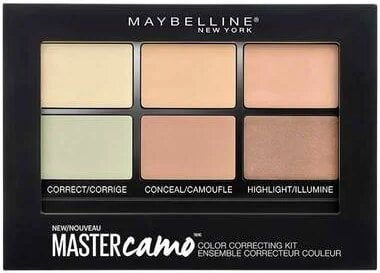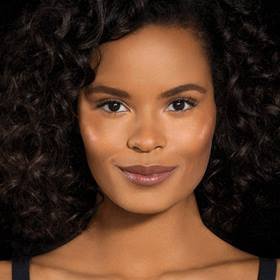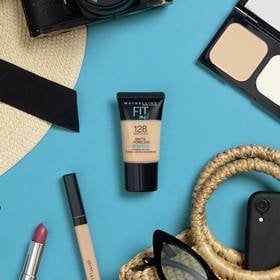Colour Corrector - How To Use Colour Correction Makeup For Beginners

There are times when your face makeup doesn’t look the way you envisioned it, with redness, dark circles, and scars peeking through the layers of foundation and concealer. While you may think that layering more base makeup is the solution, it definitely isn’t. Too many layers can make your glam look cakey, so all you need is a colour corrector palette. Here’s how you can achieve so much with minimal colour correcting.
Understand Colour Correcting for Beginners
• When do I apply a Colour Corrector?
• Where Should You Put a Colour Corrector?
• What Colour Corrector Should You Use?
• What Does an Orange Colour Corrector Do?
• What Does a Peach Colour Corrector Do?
• What Does a Green Colour Corrector Do?
• What Does a Yellow Colour Corrector Do?
• What Does a Lavender Colour Corrector Do?
• How to Colour Correct Dullness and Add Brightness
• How to Colour Correct Redness
• How to use a Colour Corrector
Frequently Asked Questions about Colour Correcting
What Is Colour Correcting?
Colour correction is a method of using contrasting colours to help you get rid of skin pigmentation, like dark circles or blemishes. These correctors are very lightweight on the skin and have a similar texture to a creamy concealer. Up until a few years ago, this trick was something only makeup artists knew about. They would work their magic with a colour corrector palette and create a flawless, even base. But colour correcting for beginners is not as tough as you would think. So, dive right in.
• When Do I Apply A Colour Corrector?
If you’re colour correcting, then it automatically becomes the first step of your makeup, after primer, of course. Once you’ve cleansed and primed your skin, you can break out the colour correcting palette and use it sparsely on areas that need to be neutralised. Then layer it with your foundations and concealers.
• Where Should You Put a Colour Corrector?
Unlike your base makeup, colour correcting is not for your entire face. It’s only meant for the select few pigmented areas that need to be evened out. Start by identifying your problem areas. Check for dark circles around your eyes, any redness around your cheeks and nose, blemishes, hyperpigmentation on the skin, or any dullness on your forehead, temples, and chin. Understanding these targeted areas is the key to your query - what is colour correcting.
• What Colour Corrector Should You Use?
The colours you use are directly opposite to the colours of the pigmented skin. Using these opposing shades cancels them out and evens out your skin tone. The colours that are generally used are green, lavender, yellow, and a few other coral shades. Each colour is used to target a specific area of concern. Now that you know how to identify your area of concern, it’s time to learn about a colour correcting palette.
• What Does an Orange Colour Corrector Do?
Orange colour corrector works against blue and purple hues, it is the most commonly used for colour correcting dark circles. It helps you cancel out any dark spots you may have and even neutralizes your crow’s feet. Orange colour corrector is best suited for people with medium to darker skin. If you don’t have one, you can simply use a concealer with an orange undertone before applying foundation. Another great hack is to simply use your orange cheek tint. You can also use your creamy orange crayon lipstick and apply it under your eyes and on any dark spot you want to correct. Blend it well using a wet sponge or brush.
• What Does a Peach Colour Corrector Do?
A peach colour corrector does the same job as an orange colour corrector, but it is suitable for people with fair to medium skin tones. An orange colour corrector may be too harsh and look patchy on fair skin, which is why a peachy colour corrector for dark circles is ideal to reduce their appearance on fair to medium skin.
• What Does a Green Colour Corrector Do?
Colour correcting with green is very effective to reduce the appearance of redness on your skin. If you have an angry pimple, with redness around it, just apply a light layer of green colour corrector from your colour corrector palette to cancel it out. It also helps cover blemishes and red acne marks.
• What Does a Yellow Colour Corrector Do?
A yellow colour corrector is used to effectively cover the appearance of bluish-purple bruises and veins. It can also cover brownish dark circles and mild redness. If you don’t have a yellow colour corrector on hand, you can use a concealer with yellow undertones to colour correct. A full coverage concealer with yellow undertones will act as a colour correcting concealer too.
• What Does a Lavender Colour Corrector Do?
This is the opposite of yellow. Colour correcting with lavender will help you brighten your skin and cancel out yellow undertones. If your skin is looking too dull and lacklustre, adding a lavender colour corrector will brighten up your skin. This one comes in handy for correcting dull, sallow skin. You can start colour correcting with purple for deeper skin tones.
Summary!
• Green corrects redness.
• Peach/orange corrects dark circles.
• Purple brightens dullness.
• Yellow evens out purple/blue undertones.
How to Colour Correct Dullness and Add Brightness?
Pale, yellow tones make your skin dull. While warm makeup helps you look brighter, you should try colour correcting with lavender and purple to hide the sallow tones and instantly brighten your skin. Use it on the cheeks, forehead, and any areas that look prominently pale and layer with a foundation.
How to Colour Correct Redness?
Try colour correcting with green to neutralise any redness or swelling. Acne, pimples, allergies, and scrubbing can leave you with red skin. You can start by icing your skin to soothe it, then use a gentle primer, and layer your green colour corrector.
How to Colour Correct: Colour Correcting for Beginners
Step 1 - Identify Your Concern
As you know, colour correcting is not for the entire face. Use a colour corrector sparingly, only on the areas that need to be neutralised. Start by identifying concerns like paleness, redness, or pigmentation.
Step 2 - Prime
Don’t use any makeup products on the skin without a primer. A primer evens out your skin before you start colour correcting, keeps your makeup from settling into creases, and even eases blending.
Step 3 - Colour Correcting
Choose the right pigment and start colour correcting the targeted areas. Use a makeup brush, a damp sponge, or your fingertips to blend it in.
Step 4 - Base Makeup
Lightly layer your foundation or concealer over the corrected areas for seamless coverage. You can go on to use blushers, highlighters, and powder makeup to build your glam.
Step 5 - Set it Away
Finish your eye makeup and lip makeup, then go on and spritz your setting spray to keep your glam fresh and intact.
Frequently Asked Questions about Colour Correcting
Yes. While a concealer can help you smooth over some blemishes, it cannot completely remove redness or intense pigmentation. Since too many layers of concealer may look cakey, it’s best to invest in a colour corrector
Layer your colour correcting with concealers and foundations for a smoother makeup base.
Use shades like orange, purple, yellow, and green for medium to deep Indian skin tones. Use yellow to cover dark veins, orange to cover dark circles, green to cover inflammation, and purple to cover paleness.
Now that you know what is colour correcting, the types of colour correctors, and how to use them, it’s time to ace a flawless face makeup. Don’t forget to find your tone-matched makeup online with Maybelline’s Foundation Finder while learning more face makeup tips.
Put together beautiful eye makeup and lip makeup looks with the Virtual Try-On tool!




